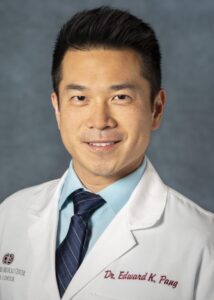Shoulder Pain Q & A
What causes shoulder pain?
If you have shoulder pain, there’s a good chance it comes from a rotator cuff injury. The rotator cuff includes a group of muscles and tendons that hold the upper arm in the shoulder joint and support the full range of arm movement.
Many people tear their rotator cuff during sports activities or develop an injury due to repetitive movements that gradually tear the tissues.
Beyond rotator cuff injuries, many health conditions cause shoulder pain, including:
- Osteoarthritis
- Bursitis
- Impingement syndrome
- Labral tears
- Tendinitis
- Shoulder fractures
- Shoulder dislocations
- Frozen shoulder
If you have shoulder pain, don’t wait to seek treatment. The tissue damage only gets worse, and you can end up with chronic joint instability.
What symptoms accompany shoulder pain?
Shoulder pain often occurs together with other symptoms, including:
- Arm weakness
- Difficulty lifting your arm
- Pain when using your arm
- Joint instability
- Muscles spasms
- Joint clicking
- Limited range of motion
- Loss of movement
Dislocations and fractures also cause bruising and swelling.
How is shoulder pain treated?
Dr. Pang thoroughly evaluates your symptoms and shoulder, then develops a plan to ease your pain. Your treatment may include one of many possible therapies, such as:
- Physical therapy
- Steroid injections
- Trigger point injections
- Nerve blocks
- Spinal cord stimulation
- Radiofrequency ablation
- Platelet-rich plasma (PRP) injections
- Stem Cell Injections
Nerve blocks, spinal cord stimulation, and radiofrequency ablation use different techniques to stop the nerves from delivering pain signals to your brain.
During a nerve block, Dr. Pang injects an anesthetic to stop pain messages. Spinal cord stimulation uses mild electrical impulses to block the specific spinal nerves relaying pain signals.
If you get radiofrequency ablation, Dr. Pang uses a specialized needle that sends a small burst of radiofrequency energy to one targeted nerve. The energy creates a small wound that stops nerve signals and relieves your pain until the nerve grows back, which takes at least nine months.
PRP injections contain your body’s own platelets. After Dr. Pang injects PRP, the platelets activate tissue healing and reduce inflammation.
Don’t wait to seek help for shoulder pain. Schedule an appointment at the Edward K. Pang Medical Corporation by calling the office or using the online booking feature today.

